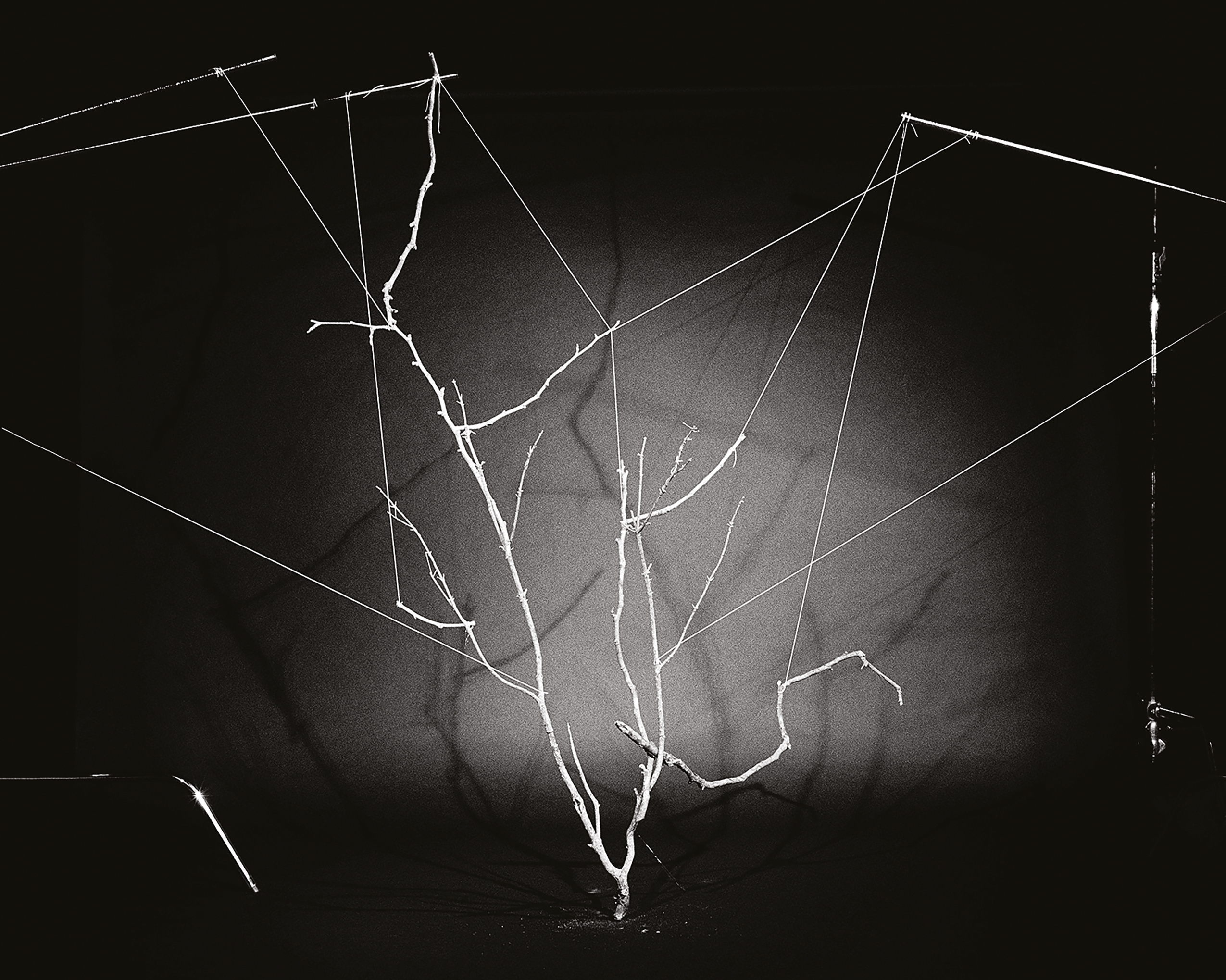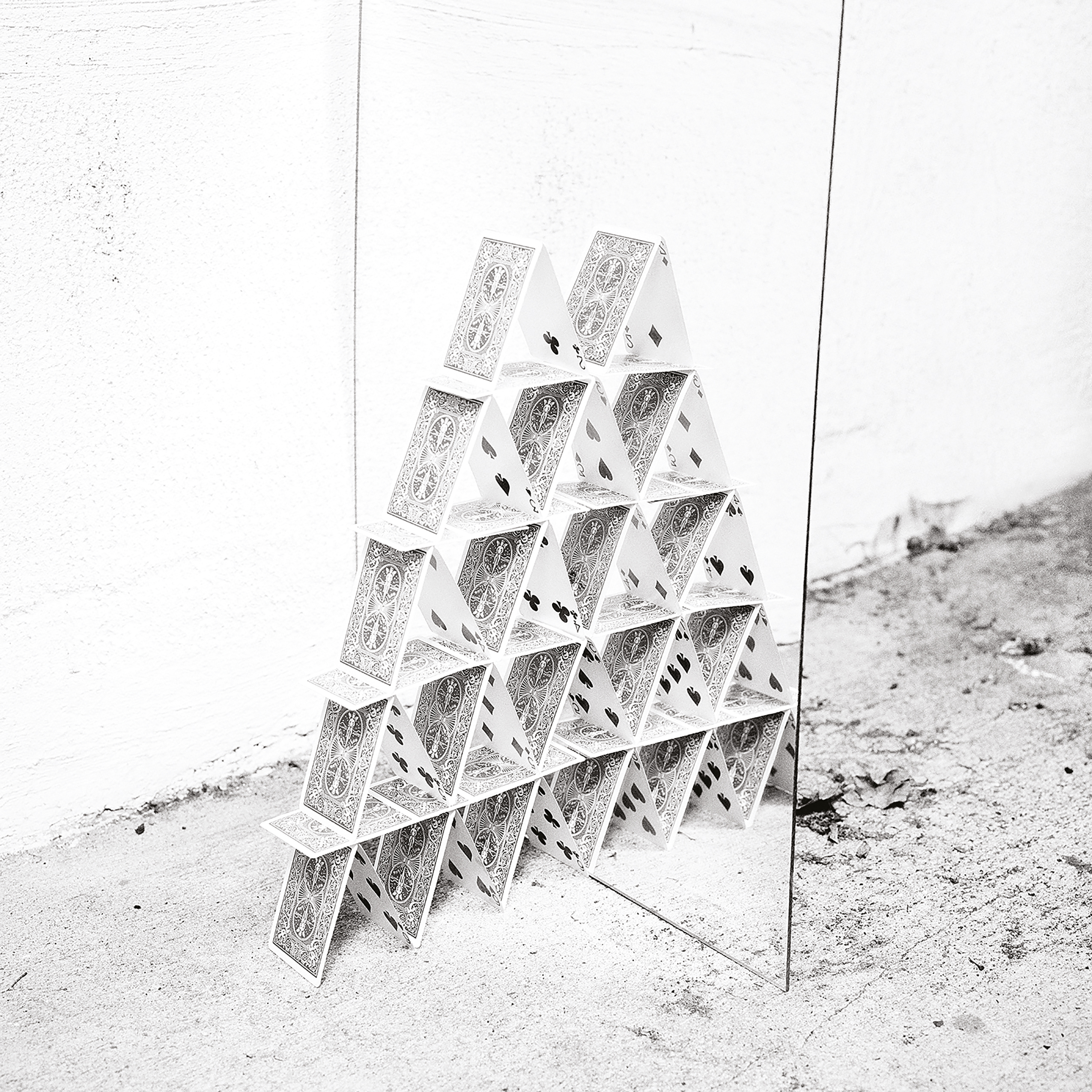Floor Plan, 2022
Inspired by the theory of plate tectonics, the South Korean artist wields everyday objects in her elegant towers, creating quiet, weightless images
A pyramid of playing cards; a stack of desk chairs; cutlery, balloons and tree branches. The objects and sculptural forms that appear throughout South Korean photographer Su Ji Lee’s project Thing Tectonics seem disparate at first. But all of them are, in fact, connected. They are familiar yet symbolic items from our daily lives that represent wider metaphysical theories and phenomena, acting as accessible visual metaphors for the laws of nature and being.
“The project title is inspired by the theory of plate tectonics, wherein the Earth’s outer shell is divided into several massive plates gliding over the Earth’s mantle,” she says. “The dichotomy between these massive plates we stand on and the common crockery upon which we put our food was very humorous to me.” This led to a series of visual enquiries, with each image reinterpreting “the ontological value of the minute beings we often refer to as ‘things.’”
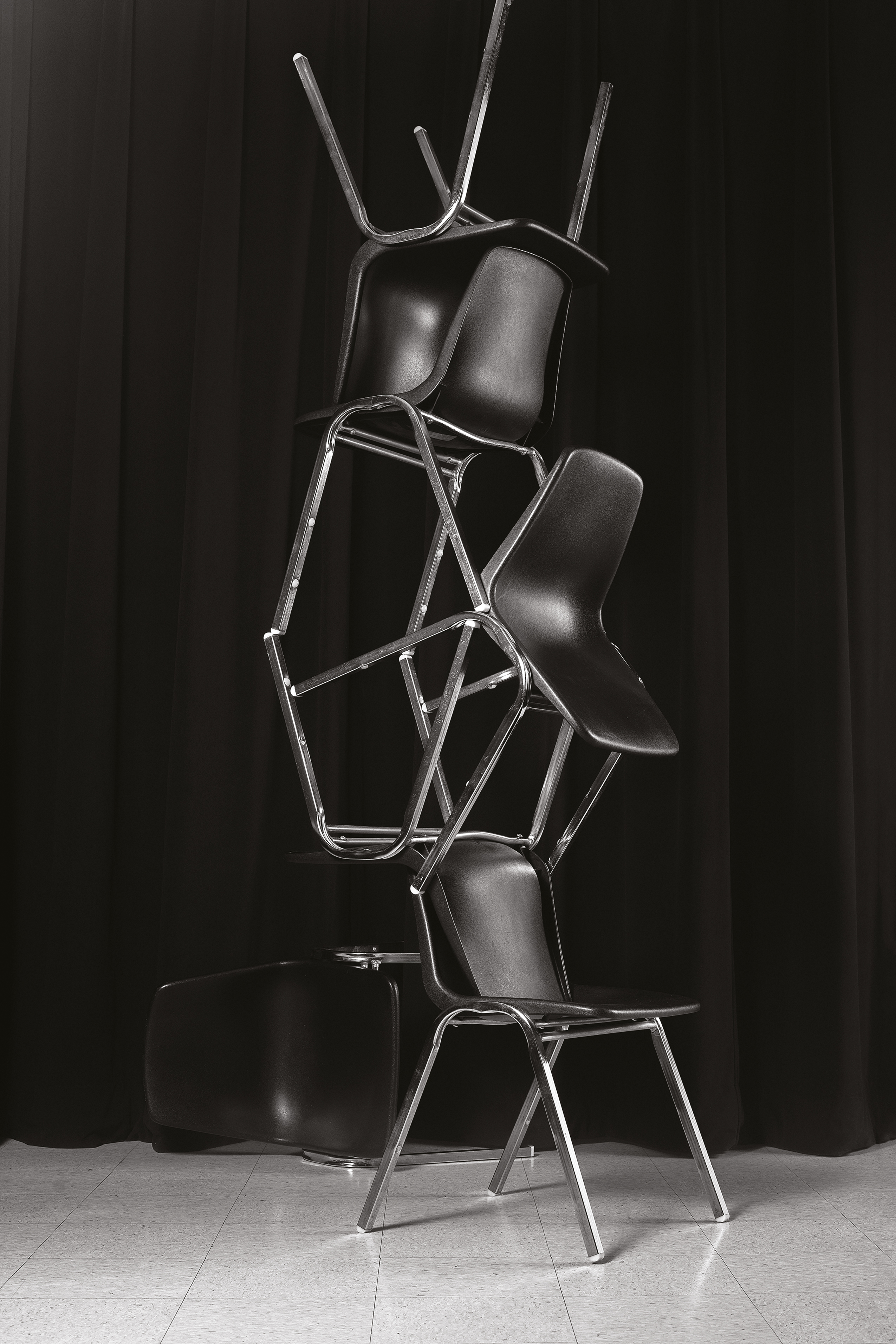
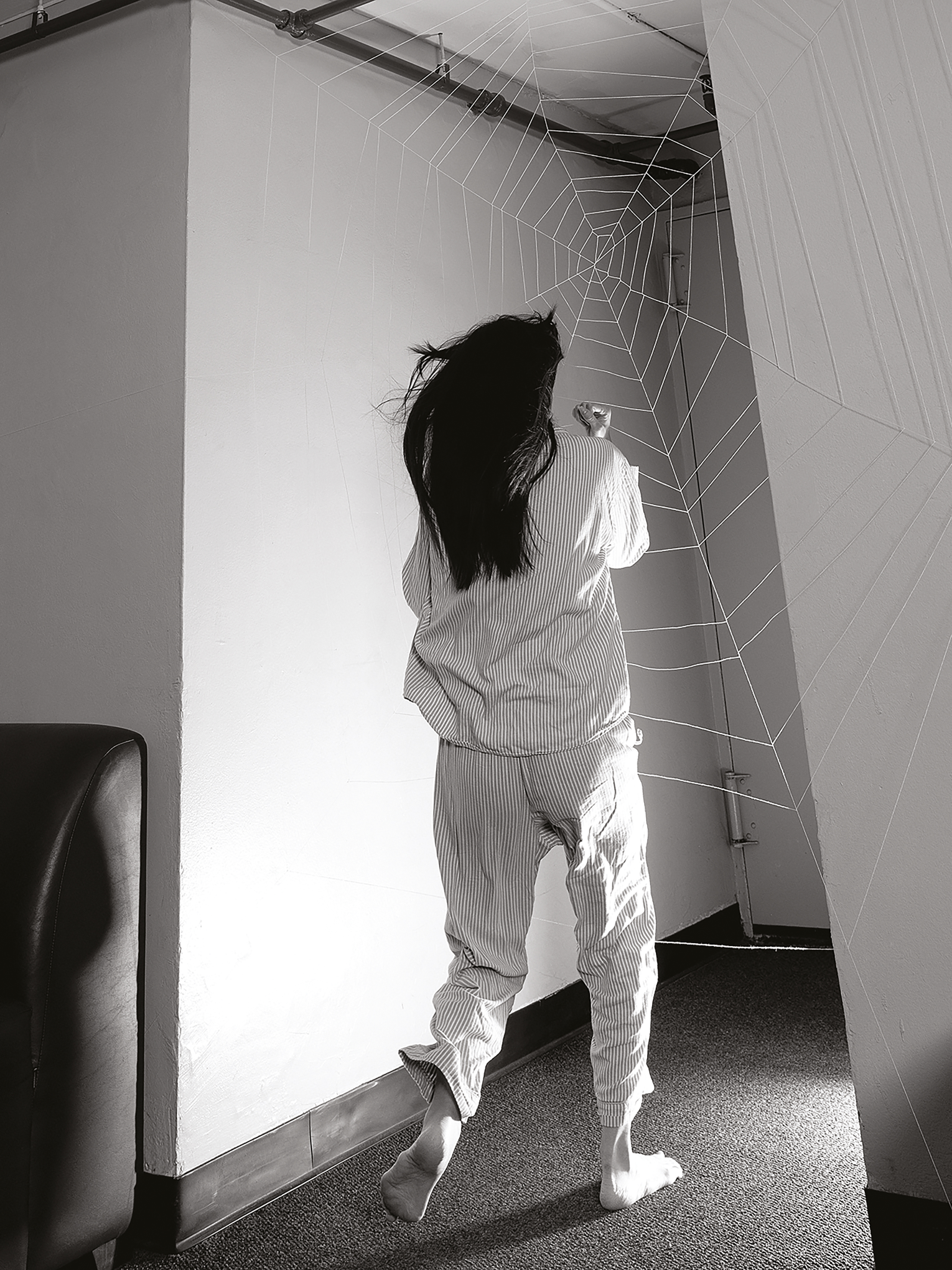
“Isn’t it bizarre that I am sitting in a room with four walls and a ceiling when the universe is exponentially expanding at this very moment?”
An example of this is salt: “Salt is one of the most common household condiments, we consume it every day, yet we don’t cherish it as a prized possession.” In an image titled Salt Mimesis, Lee attempts to quantify the physical and subjective properties of the condiment. She creates a sort of scientific chart, complete with black-and-white images of salt piles and a checklist of properties, as if taken from a textbook. Then there is an image of a dinner plate, spinning through the air, quite literally appearing as a ‘flying saucer’ – becoming a thing of wonder in an otherwise empty night sky.
Many of the scenes Lee creates can be described as temporary sculptures because, she says, “all of the constructions in my images exist solely to be recorded on the flat emulsion of a photograph and then destroyed without a trace”. The photographs become “a piece of evidence” of a moment of manipulated reality. This is the case in the image For Being a Tree (2021), in which Lee reconstructs the form of a tree out of discarded branches. “While the branches are held together with glue and string to form the image of a tree, it is ultimately a futile imitation,” she says.
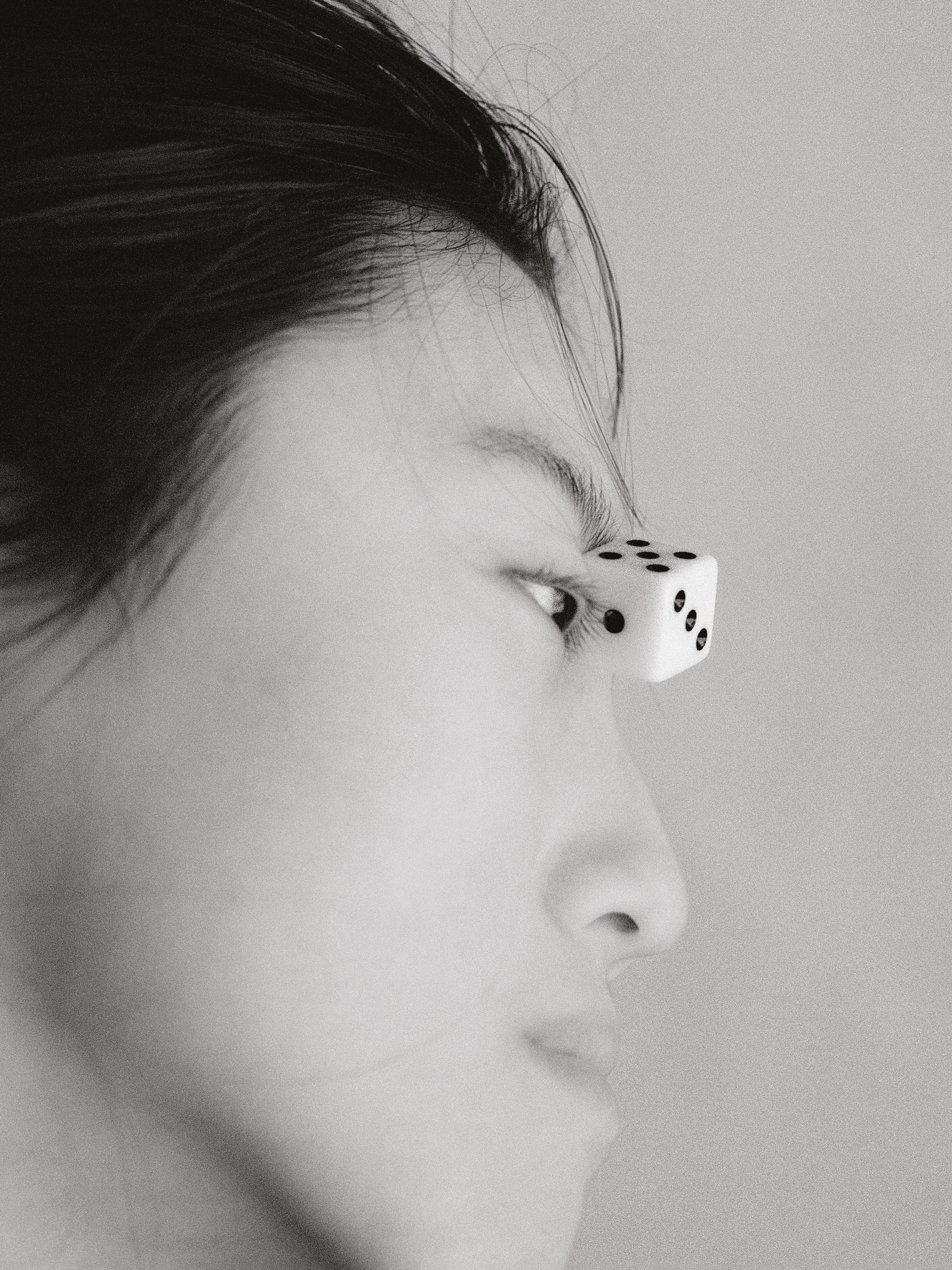
Shooting the majority of her images on medium format film, Lee works in both colour and black-and-white, choosing intuitively as she goes. For each new image, she constructs her scene in front of the camera and then, for some of them, asks her partner to step into the frame – not so much as a character, more as a default human presence to activate the scene.
“Isn’t it bizarre that I am sitting in a room with four walls and a ceiling when the universe is exponentially expanding at this very moment?” muses Lee, adding that, in the end, re-evaluating everyday objects through her experiments has become like “a special visual way to index time”. The project will go on as long as she remains curious. “I want to further dissect this world into my own units of measure,” she says, “with both humour and a sense of weightlessness.”
